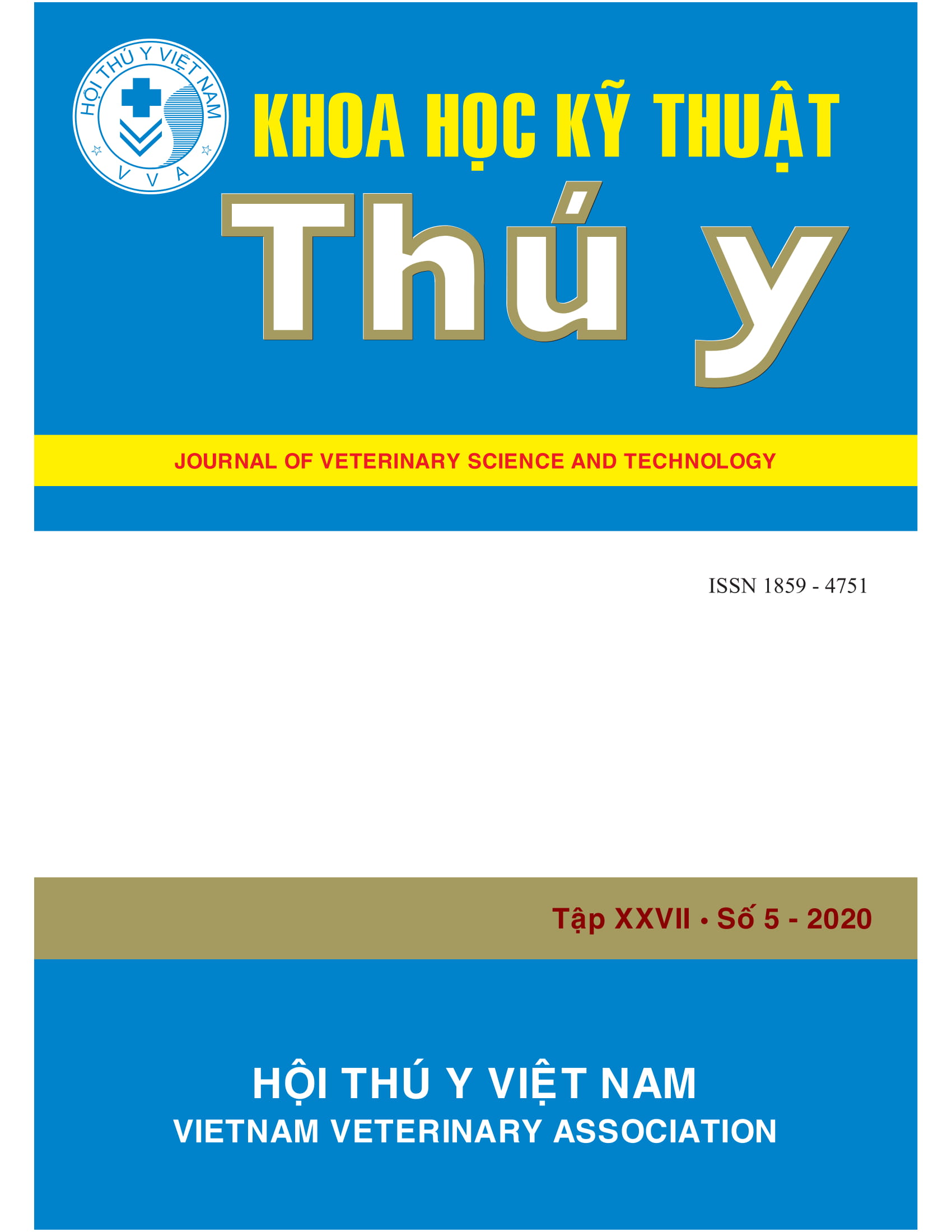Prevalence of gastrointestinal nematode in goat and experimental therapy in Tra Vinh province
Abstract
The study was conducted to determine the infection rate of goat with gastrointestinal nematode and the efficacy of experimental deworm treatment for the goats raising in Chau Thanh, Cau Ngang and Duyen Hai
districts, Tra Vinh province from 1 April 2019 to 30 December 2019. A total of 360 goat fecal samples was examined for gastrointestinal nematodiasis by using floatation technique. Overall, the infection rate of goat with gastrointestinal nematode was found to be 59.7%. The results of classifying these parasites showed that most of the goats raising in the above regions were infected with Heamonchus contortus (58.3%), Trichocephalus ovis (47.2%), and Oesophagostomum sp. (12.8%). In addition, by the autopsy method, the infection rate of goat with these parasites was 74.4%. This infection rate was also increased by the age of goat, at the age under 1 year old, 1 to 2 years old, and over 2 years old, the infection rate was 53.3%,
76.7% and 93.3%, respectively. Moreover, H. contortus, T. ovis, and O. columbianum were also found in the gastrointestine of goat by this method. The experimental deworm treatment by albendazole with a dose of
5 mg/kg body weight and 7,5 mg/kg body weigh, and fenbendazole with a dose of 5 mg/kg body weigh and 10 mg/kg body weigh (by oral route) was carried out. As a result treatment by these drugs were effective, with 100% of the disease animals were recovered and safety during treatment.

